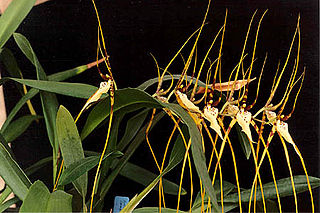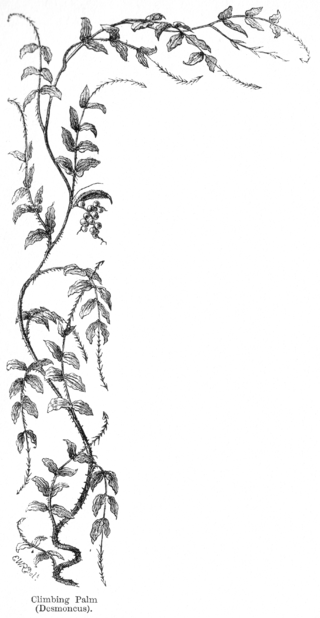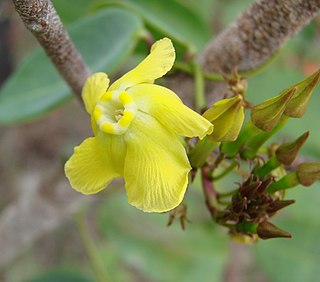
Chusquea is a genus of evergreen bamboos in the grass family. Most of them are native to mountain habitats in Latin America, from Mexico to southern Chile and Argentina.

Brassia is a genus of orchids classified in the subtribe Oncidiinae. It is native to Mexico, Central America, the West Indies, and northern South America, with one species extending into Florida.

Clethra is a genus of flowering shrubs or small trees described as a genus by Linnaeus in 1753.

Pouteria is a genus of flowering trees in the gutta-percha family, Sapotaceae. The genus is widespread throughout the tropical Americas, with outlier species in Cameroon and Malesia. It includes the canistel, the mamey sapote, and the lucuma. Commonly, this genus is known as pouteria trees, or in some cases, eggfruits.

Weinmannia is a genus of trees and shrubs in the family Cunoniaceae. It contains 90 species, which range from Mexico through Central and South America including the Caribbean, and to the Mascarene Islands in the western Indian Ocean. It is absent from mainland Africa and Australia, but some fossils have been attributed to Weinmannia in Australia.

Desmoncus is a genus of mostly climbing, spiny palms native to the Neotropics. The genus extends from Mexico in the north to Brazil and Bolivia in the south, with two species present in the southeastern Caribbean.

Brunellia is a genus of trees. They are distributed in the mountainous regions of southern Mexico, Central America, West Indies, and South America. Brunellia is the only genus in the family Brunelliaceae. As of 2001 there were about 54 species.

The following outline is provided as an overview of and topical guide to South America.

Prestonia is a genus of plants in the family Apocynaceae, first described as a genus in 1810. It is native to Mexico, Central America, South America, and the West Indies. It is closely related to Artia and Parsonsia.

Telchin licus, the banana stem borer, is a moth of the Castniidae family. It is native to South America, where it is found from Colombia, Venezuela and the Guianas, throughout the Amazon basin in Brazil and Peru. It has also been recorded as an introduced species in Hawaii.

Amauta is a genus of moths within the family Castniidae. It was described by Constant Vincent Houlbert in 1918.

Castniomera is a monotypic moth genus in the family Castniidae described by Constant Vincent Houlbert in 1918. Its single species, Castniomera atymnius, commonly known as the giant butterfly-moth, was first described by Johan Wilhelm Dalman in 1824. It is known from Mexico through Central America to Venezuela.

Xanthocastnia is a genus of moths within the family Castniidae containing only one species, Xanthocastnia evalthe, which is widespread in the Neotropical realm, ranging from southern Mexico to southern Brazil.

Amauta cacica, the sugar-cane borer moth, is a moth in the Castniidae family. It is found in Colombia, Ecuador, Guatemala, Costa Rica and Panama.
Castnius pelasgus is a moth in the Castniidae family. It is found in Suriname, Peru and Amazonas.
Athis palatinus is a moth in the Castniidae family. It is found from Mexico south to Peru and Brazil.
Athis rutila is a moth in the Castniidae family. It is found in Brazil, Venezuela, French Guiana and Peru.
Eupalamides cyparissias is a moth in the Castniidae family. It is widespread in the Amazon basin including Peru, Colombia, Ecuador, Venezuela, Brazil, the Guianas, Suriname and north to Panama.
Haemonides cronida is a moth in the Castniidae family. It is found in Peru, Suriname and Venezuela.

Duboisvalia ecuadoria is a moth in the Castniidae family. It is found in Ecuador, Colombia, Peru and Bolivia.














